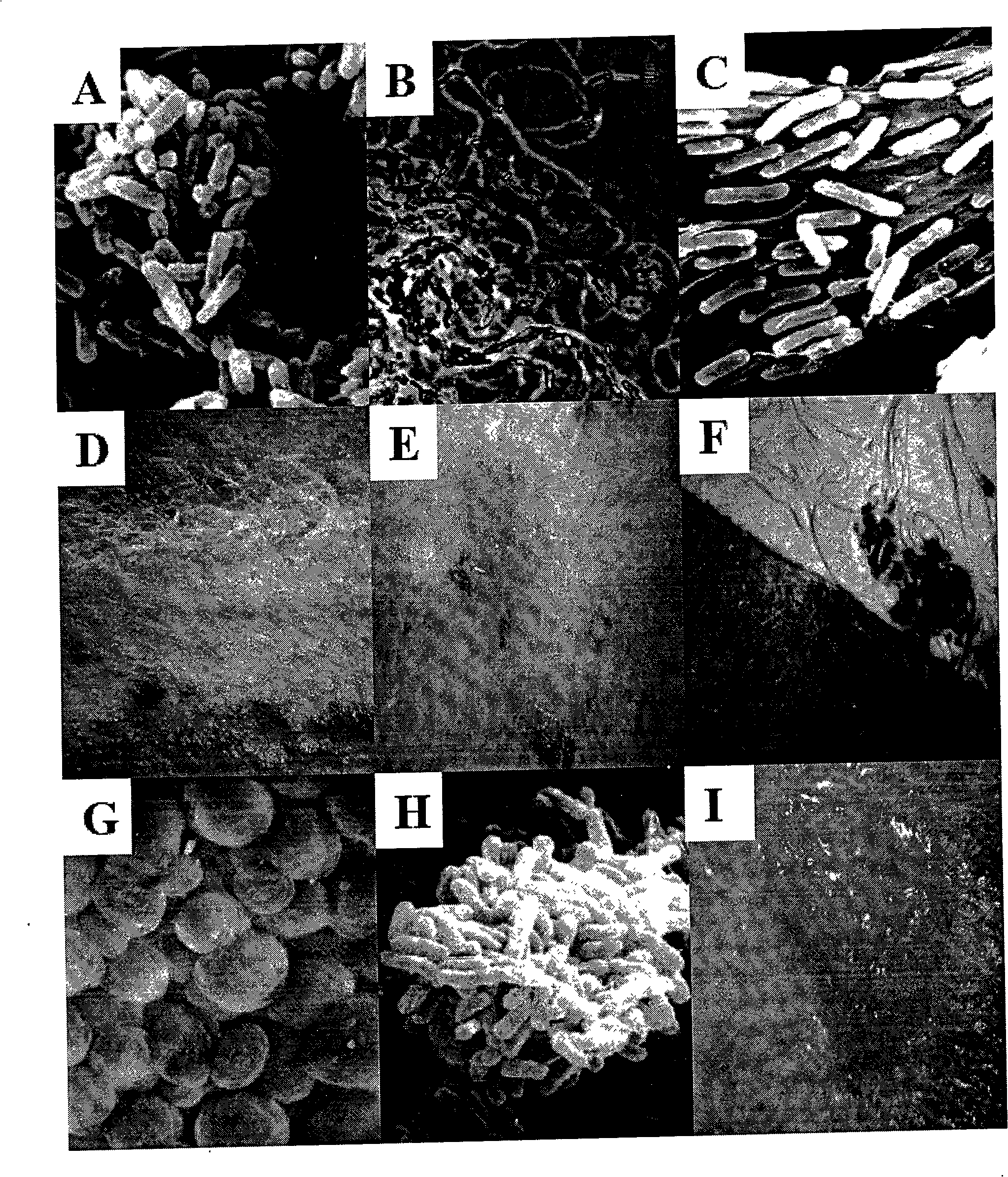A alkali-fast sorangium cellulosum and uses of the same in producing epothilone
A technology of Cystobacter fibroblastus and alkali-resistant fibers, which is applied in the biological field and can solve the problems of low yield of secondary metabolites, contamination of bacteria, and slow growth rate of Cystobacter fibrioides
- Summary
- Abstract
- Description
- Claims
- Application Information
AI Technical Summary
Problems solved by technology
Method used
Image
Examples
Embodiment 1
[0089] Embodiment 1 Utilizes inducing acclimation to obtain the alkali-resistant Sonocystis cellulosus bacterial strain of high-yield epothilones
[0090] Isolation and purification of starting strains: The isolated soil samples come from the shore soil of Chenghai Lake in the middle of Yongsheng County, Lijiang City, Yunnan Province. The sampling site is 1503 meters above sea level, with an average temperature of 18.7°C, no frost throughout the year, and the water quality is alkaline (pH8.6 ), the light is sufficient, the pH of the soil sample is 9.2, and it is air-dried for later use. Spread sterile filter paper on the CNST plate, the pH of the culture medium is 7.2, and add filter-sterilized cycloheximide with a concentration of 25 μg / ml, culture it upright at 30°C, and observe the myxobacteria under a dissecting microscope every day after 2 days The expansion situation, and the myxobacteria that appeared were picked and expanded and touched to the fresh CNST medium for cul...
Embodiment 2
[0098] Example 2 Sequencing of the 16S rRNA gene of Sorangium cellulosum So0157-2CCTCC NO: M 208078 strain
[0099] The alkali-resistant Sonocystis cellulosus So0157-2 of high-yielding epothilones obtained by the induction and acclimation of Example 1, i.e. the CCTCC NO: M 208078 bacterial strain, was entrusted to Shanghai Sangon Biological Engineering Technology and Service Co., Ltd. , Ltd.) for 16S rRNA gene sequencing.
[0100] The experimental method is: mix the bacteria of CCTCC NO: M 208078 strain with a spinner bottle, centrifuge, and suspend with STE solution (approximately 0.5ml of STE solution per 0.1g of bacteria); add 0.5ml of bacteria into 5ml of centrifuged In the tube, mix well with a shaker, add 400μl 10% SDS, 30μl 20mg / ml proteinase K, mix well, keep warm at 37°C for 1 hour; add 0.4ml 5M NaCl, mix well and let stand for 10 minutes, then add 0.4 ml CTAB / NaCl, mix well, incubate at 65°C for 20 minutes; take out the centrifuge tube and extract with an equal volu...
Embodiment 3
[0113] Example 3 Application of Sorangium cellulosum So0157-2CCTCC NO: M 208078 in the preparation of epothilone
[0114] (1) Strain selection: select Sorangium cellulosum So0157-2CCTCCNO: M 208078 of the present invention;
[0115] (2) Activation of slant culture: inoculate the bacteria on the slant medium, and culture it statically for 96 hours at 32°C, and set it aside;
[0116] (3) Seed cultivation: With the strain cultivated in step (2), under aseptic conditions, use an inoculation loop to scrape off all the bacteria on a slope, inoculate it in 50mL (250mL triangular flask) liquid seed medium, set the rotation speed On a shaker at 180 rpm with a radius of rotation of 35 mm, culture at 32°C for 72 hours to obtain a seed solution;
[0117] (4) Fermentation culture:
[0118] Shake flask fermentation: with the inoculum amount of 10% volume ratio, inoculate the seed liquid in the shake flask that 120mL (500mL Erlenmeyer flask) fermentation medium is housed, 32 ℃, rotating sp...
PUM
 Login to View More
Login to View More Abstract
Description
Claims
Application Information
 Login to View More
Login to View More - R&D
- Intellectual Property
- Life Sciences
- Materials
- Tech Scout
- Unparalleled Data Quality
- Higher Quality Content
- 60% Fewer Hallucinations
Browse by: Latest US Patents, China's latest patents, Technical Efficacy Thesaurus, Application Domain, Technology Topic, Popular Technical Reports.
© 2025 PatSnap. All rights reserved.Legal|Privacy policy|Modern Slavery Act Transparency Statement|Sitemap|About US| Contact US: help@patsnap.com



